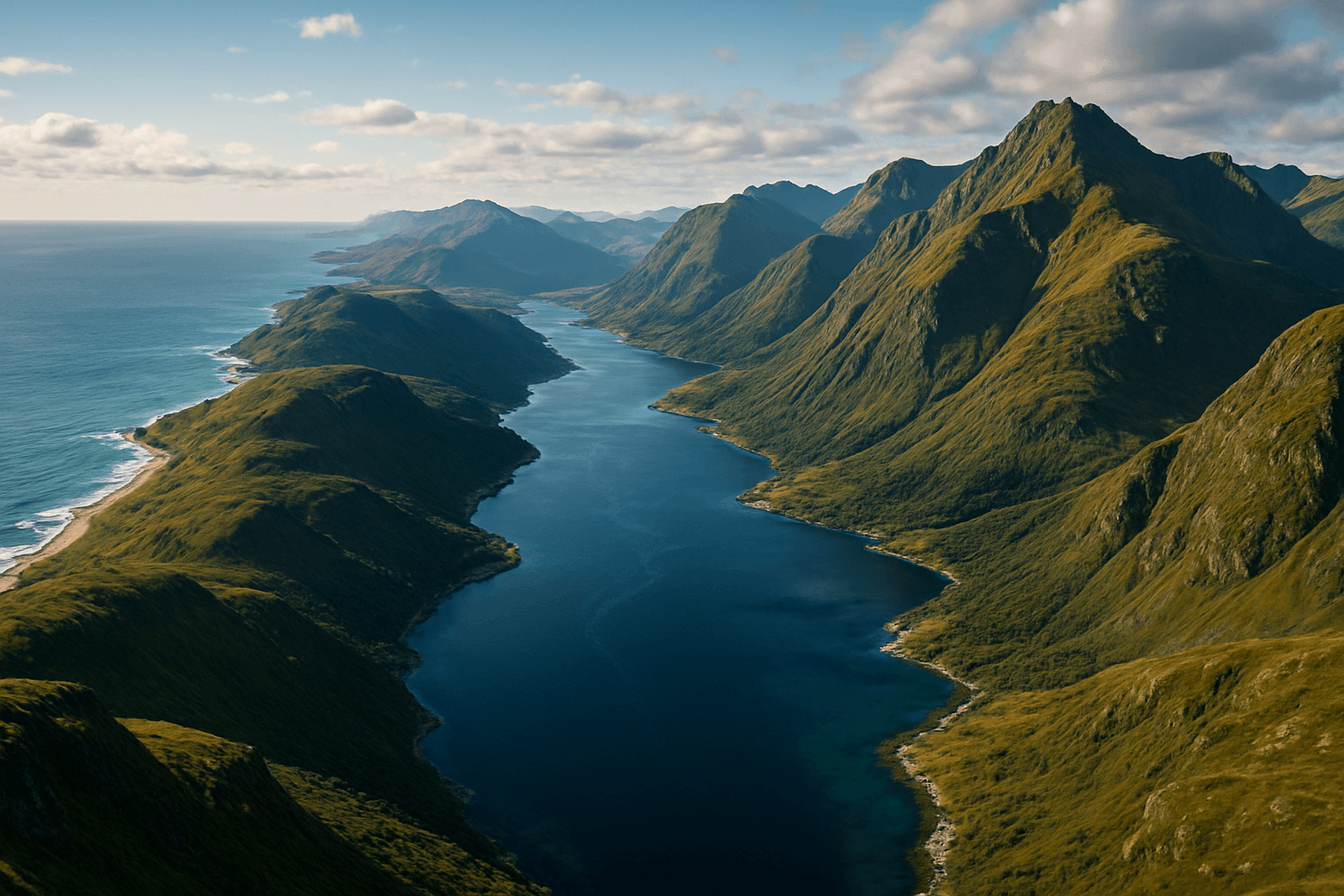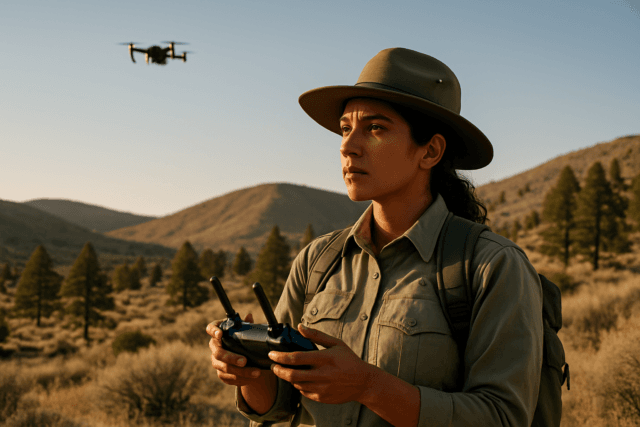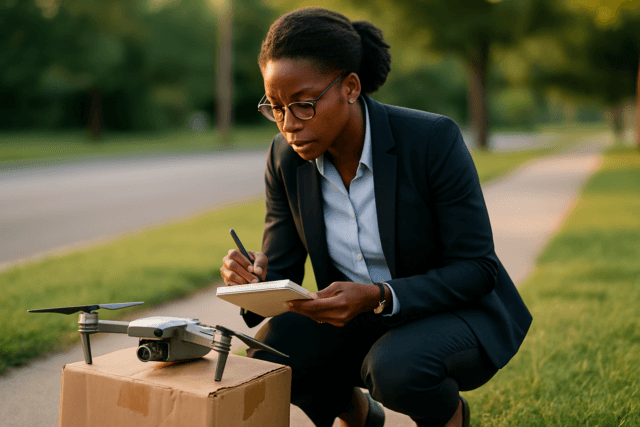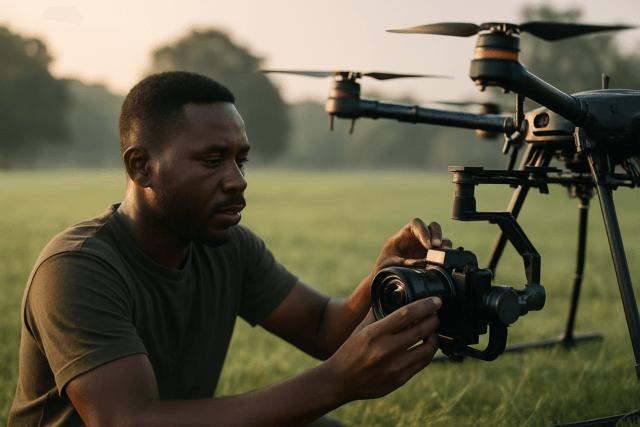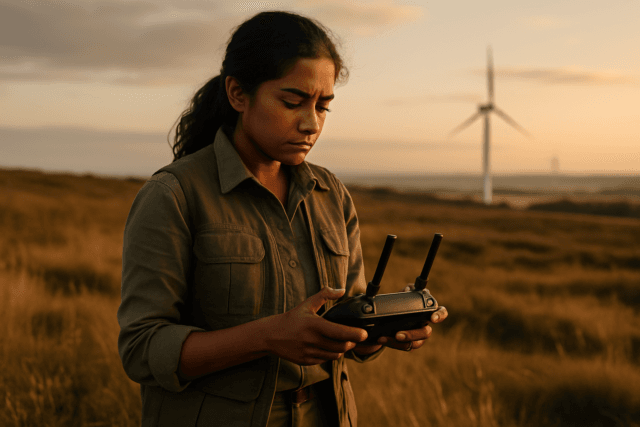Drone photography has opened up a world of creative possibilities, allowing us to capture breathtaking aerial perspectives previously unimaginable. However, simply having a drone doesn’t guarantee stunning photos. Composition is key, and one of the most fundamental composition techniques is the rule of thirds.
This guide will explore how to use the rule of thirds to elevate your drone photography, creating visually appealing and balanced aerial images that capture the viewer’s attention.
What is the Rule of Thirds?
The rule of thirds is a guideline that suggests dividing your image into nine equal parts using two horizontal and two vertical lines. Imagine a tic-tac-toe grid overlaying your scene. The principle states that placing key elements along these lines or at their intersections creates a more balanced, engaging, and visually interesting composition.
Instead of placing your subject smack-dab in the center, positioning it off-center along these lines or at the points where they intersect creates a more dynamic and natural-looking image. The rule of thirds encourages you to give your subject “breathing space,” allowing the viewer’s eye to explore the scene and discover different elements.
Why is the Rule of Thirds Important in Drone Photography?
- Creates Balance: Off-center placement, guided by the rule of thirds, leads to a more balanced composition than simply centering the subject.
- Adds Visual Interest: Placing elements along the gridlines or intersections adds depth and visual interest, making the image more engaging.
- Guides the Viewer’s Eye: The rule of thirds helps guide the viewer’s eye through the frame, highlighting key elements and creating a sense of flow.
- Enhances Storytelling: Using the rule of thirds thoughtfully can enhance the story you’re trying to tell with your photograph.
- Professional Look: Applying this rule helps to give your drone photos a professional and polished look.
How to Apply the Rule of Thirds in Drone Photography
1. Activate the Grid Overlay
Most modern drones and camera apps have a grid overlay feature that displays the rule of thirds grid on your screen. Activating this feature makes it easier to visualize the grid and compose your shots according to the rule.
2. Identify Key Elements
Before taking a shot, identify the key elements in your scene. What is the main subject you want to highlight? Are there any supporting elements that add context or interest?
3. Position the Horizon Line
When shooting landscapes, consider placing the horizon line along one of the horizontal gridlines.
- Horizon on the Top Line: Emphasizes the foreground, drawing attention to the landscape below.
- Horizon on the Bottom Line: Emphasizes the sky, showcasing clouds, sunsets, or other atmospheric elements.
Avoid placing the horizon directly in the middle of the frame, as this can create a static and uninteresting composition.
4. Place Points of Interest at Intersections
Position your main subject or points of interest at one of the four intersections of the gridlines. This creates a strong focal point that immediately grabs the viewer’s attention.
5. Utilize Leading Lines
Incorporate leading lines into your composition to guide the viewer’s eye towards the subject. Leading lines can be roads, rivers, fences, or any other linear element that draws the eye through the scene. Position these lines so that they intersect with the gridlines, further enhancing the composition.
6. Create Negative Space
Use negative space (empty space around your subject) to create a sense of balance and draw attention to the main element. Place your subject off-center, according to the rule of thirds, and allow the surrounding space to provide context and enhance the overall composition.
7. Experiment with Different Angles
Don’t be afraid to experiment with different angles and perspectives. Fly your drone higher or lower, tilt the camera up or down, and move around your subject to find the most compelling composition.
Drone Photography Scenarios and the Rule of Thirds
Landscape Photography
- Mountains: Position the mountain range along the top horizontal line, emphasizing the vastness of the landscape below. Place a lone tree or building at one of the intersections to create a focal point.
- Coastlines: Align the shoreline with one of the horizontal lines, showcasing the contrast between land and water. Place a boat or other interesting feature at an intersection.
- Forests: Use the edges of the forest or paths within it as leading lines, guiding the viewer’s eye towards a clearing or other point of interest positioned at an intersection.
Urban Photography
- Buildings: Align the top or bottom of a building with a horizontal line, emphasizing its height or the surrounding cityscape. Place a person or vehicle at an intersection to provide scale.
- Roads: Use roads as leading lines, guiding the viewer’s eye through the urban landscape. Place a landmark or interesting building at an intersection.
- Parks: Position trees, fountains, or other park features along the gridlines, creating a balanced and visually appealing composition.
Abstract Photography
- Patterns: Look for repeating patterns in nature or urban environments, such as fields, crops, or rooftops. Frame these patterns so they fill the entire image, or use the rule of thirds to highlight a specific element within the pattern.
- Shapes: Experiment with geometric shapes and forms, such as circles, squares, and triangles. Use the gridlines to align these shapes and create a sense of balance and order.
- Textures: Capture interesting textures from above, such as sand, water, or foliage. Use the rule of thirds to highlight a specific area of texture or create a sense of depth and dimension.
Utilizing the Rule of Thirds with Top-Down Shots
Top-down shots are a unique aspect of drone photography, offering a perspective impossible to capture otherwise. When composing these shots, the rule of thirds can be particularly effective.
- Centering: While the rule of thirds generally advises against centering, it can work with symmetrical subjects. Ensure balance by aligning the subject precisely.
- Patterns and Textures: When capturing patterns, consider how the grid lines intersect with repeating elements, creating visual rhythm.
- Leading Lines: Even in top-down views, lines like roads or rivers can act as leading lines.
Beyond the Rule: Other Composition Techniques
While the rule of thirds is a great starting point, it’s important to remember that it’s just a guideline, not a rigid rule. There are other composition techniques that can be used in conjunction with or instead of the rule of thirds, including:
- Leading Lines: Using lines to guide the viewer’s eye through the image.
- Symmetry and Patterns: Capturing symmetrical scenes or repeating patterns.
- Framing: Using elements in the foreground to frame the subject.
- Negative Space: Using empty space around the subject to create a sense of balance and draw attention.
- The Golden Ratio: A more complex compositional guideline based on mathematical proportions.
Breaking the Rule of Thirds
Once you understand the rule of thirds, you can intentionally break it to create a more dramatic or unconventional image. For example, centering the subject can create a sense of symmetry and balance, while completely ignoring the gridlines can create a sense of tension or unease.
However, it’s important to break the rule of thirds thoughtfully and with purpose, not just for the sake of breaking it. The goal is to create a composition that effectively conveys the story or emotion you want to express in your photograph.
Drone Camera Settings and Gear
- Shoot in RAW: Capturing images in RAW format provides more flexibility during editing.
- Low ISO: Keep the ISO as low as possible to minimize noise.
- Aperture: Use a narrower aperture (f/8 to f/11) for a deep depth of field in landscapes.
- Shutter Speed: Adjust shutter speed to avoid motion blur.
- ND Filters: Use ND filters in bright conditions to control exposure and reduce light.
- Polarizing Filters: Use polarizing filters to reduce glare and enhance colors.
- AEB (Auto Exposure Bracketing): Use AEB to capture multiple shots at different exposures for HDR photos.
Post-Processing for Drone Photography
Post-processing is an essential step in drone photography, allowing you to fine-tune your images and bring out their full potential.
- Color Correction: Adjust white balance and color saturation to achieve the desired look.
- Exposure Adjustments: Fine-tune the exposure to brighten or darken the image.
- Contrast Adjustments: Increase contrast to add punch and definition.
- Sharpening: Sharpen the image to enhance details.
- Cropping: Crop the image to improve the composition.
- HDR Merging: Merge multiple exposures to create a high dynamic range image.
Final Thoughts
The rule of thirds is a powerful tool for improving your drone photography compositions. By understanding and applying this guideline, you can create visually appealing, balanced, and engaging aerial images that capture the viewer’s attention. Remember to practice, experiment, and develop your own unique style. With time and effort, you’ll be able to master the art of drone photography and capture stunning aerial perspectives that showcase the world in a whole new way.

